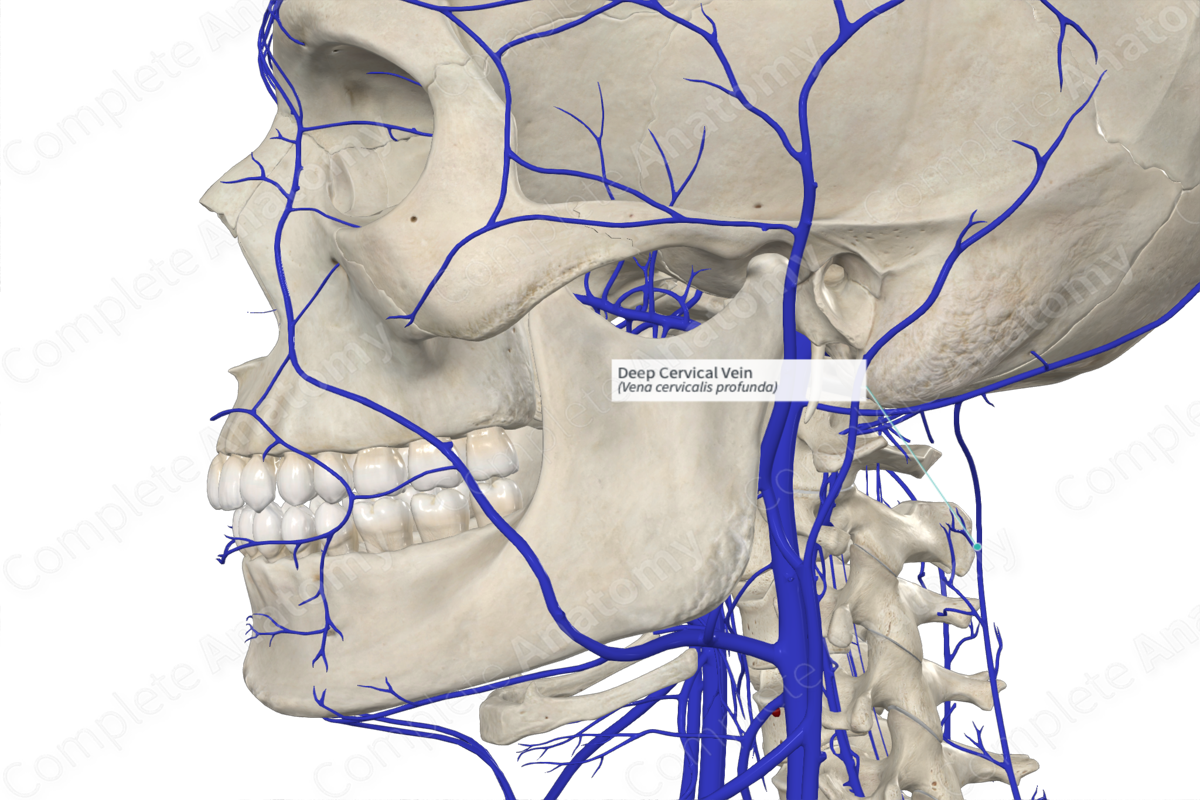
Quick Facts
Origin: In the suboccipital region from the union of communicating branch of the occipital veins and tributaries from the suboccipital muscles.
Course: Descends between semispinalis cervicis and capitis, then passes over the neck of the first rib to drain into the vertebral vein.
Tributaries: Vertebral venous plexuses.
Drainage: Suboccipital region, cervical part of vertebral column, deep muscles of the neck.
Origin
The deep cervical vein originates in the suboccipital region, from the union of a communicating branch of the occipital veins with tributaries from the suboccipital muscles.
Course
The deep cervical vein descends between the semispinalis cervicis and capitis muscles, accompanied by the deep cervical artery. The vein then passes between the neck of the first rib and the transverse process of the seventh cervical vertebra to drain into the vertebral vein.
Tributaries
The deep cervical vein receives tributaries from the vertebral venous plexuses.
Structures Drained
The deep cervical vein drains venous blood from the suboccipital region, the adjacent vertebral column, and from the deep muscles of the neck.



